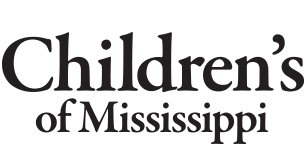I Want To
Contact Us
- For Appointments by Phone: (888) 815-2005
- Make an Appointment
Children's Orthopaedics
Main Content
Upper Extremities
The pediatric orthopaedic care team at Children's of Mississippi, a part of University of Mississippi Medical Center, includes surgeons specially trained to treat congenital hand conditions as well as complex reconstruction following trauma or as a result of neurological conditions or nerve injuries.
Congenital hand conditions we treat
Congenital hand abnormalities are a form of birth defect. Major types of congenital abnormalities of the hands include:
- Developmental
If parts of a baby's body stop developing while it is still in the womb, the child may be born with missing fingers, hands or arm bones. - Failure to separate
When parts of the hand's bones and/or tissues do not separate, a child may be born with fingers that are fused together or deformed. - Duplication
Polydactyly - having extra fingers or toes - can be simple or complex. Whether an extra digit is joined simply by skin and nerves or the duplication is complete, Children's of Mississippi physicians help parents understand the situation and make informed choices. - Undergrowth
Underdeveloped fingers or thumbs may be small or missing, and muscles and bones of the hand may be missing or underdeveloped. - Overgrowth
A child born with macrodactyly may have an overgrown finger, hand or forearm. Children's of Mississippi orthopaedists understand the special developmental needs of children — and of their bones and muscles. - Constriction band syndrome
This congenital defect is when a band of tissue grows around a child's finger or arm, restricting blood flow and normal growth.
Other conditions we treat
Whether a child is born with a physical anomaly, a problem develops during childhood or due to disease or trauma, physicians at Children's of Mississippi work with each other and with parents to make corrections and help children grow to their full potential.
- Joint contracture release
When joints and tendons become restricted, either through disorder, disease or trauma, our pediatric orthopaedic surgeons can cut through the tendon or joint to relieve the contracture. Trigger thumb, for example, is one of the many conditions that can be corrected through surgery. - Shoulder stabilization
Children's of Mississippi orthopaedists are experienced with young patients experiencing shoulder problems. Impact can damage the joint or ligaments that hold the shoulder together. Overuse of the joint may trap a ligament or create a stress fracture, and medical care is needed to restore stabilization, function, and movement of the shoulder. - Nursemaid's elbow
"Nursemaid's elbow" (radial head subluxation) occurs when one of the bones in the forearm (the radius) slips out of place, from where it normally attaches to the elbow joint. It is a common condition in children younger than 4 years of age. - Fractures
Children's bones continue to grow through adolescence and into adulthood. Younger children are especially vulnerable to fractures along growth plates - areas of developing soft cartilage which help determine the length and shape of a matured bone. Medical care is vital for evaluating whether still-growing bones are healing properly after a fracture. - Bone infections (osteomyelitis)
Germs that find their way into the body can infect bones, and treatment depends on the severity of the infection. Physicians and care teams at Children's of Mississippi understand that kids aren't just tiny adults, and they work hard to provide the right kind of care for children and their families.



 UMMC
UMMC